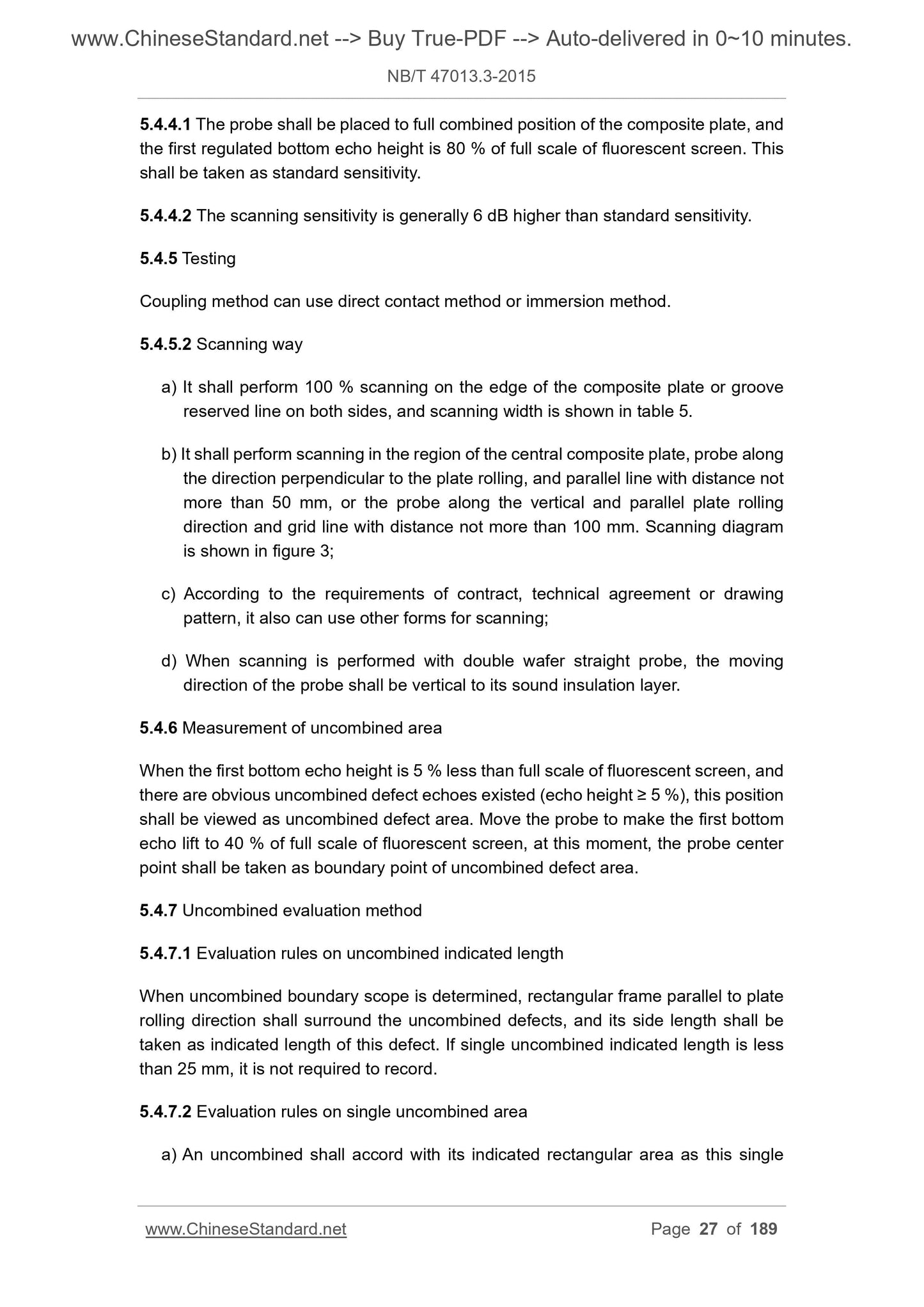1
/
of
12
PayPal, credit cards. Download editable-PDF and invoice in 1 second!
NB/T 47013.3-2015 English PDF (NB/T47013.3-2015)
NB/T 47013.3-2015 English PDF (NB/T47013.3-2015)
Regular price
$265.00
Regular price
Sale price
$265.00
Unit price
/
per
Shipping calculated at checkout.
Couldn't load pickup availability
NB/T 47013.3-2015: Nondestructive testing of pressure equipments - Part 3: Ultrasonic testing [Including 2018XG1]
Delivery: 9 seconds. Download (and Email) true-PDF + Invoice.Get Quotation: Click NB/T 47013.3-2015 (Self-service in 1-minute)
Newer / historical versions: NB/T 47013.3-2015
Preview True-PDF
Scope
1.1 This Part of NB/T 47013 specifies the pressure equipment shall adopt ultrasonictesting method and quality grading requirements in which shape A pulse reflection
ultrasonic detector is used to test work piece defect.
1.2 This Part is applicable to ultrasonic detection for metal material system pressure
equipment with raw materials or components and welded joint, and be applied to
ultrasonic detection of metal materials used in the pressure equipment.
1.3 This Part specifies ultrasonic measuring method for thickness of the pressure
equipment.
1.4 Ultrasonic detection of supporting parts and structural piece related to the pressure
equipment can also refer to this part.
Basic Data
| Standard ID | NB/T 47013.3-2015 (NB/T47013.3-2015) |
| Description (Translated English) | Nondestructive testing of pressure equipments - Part 3: Ultrasonic testing [Including 2018XG1] |
| Sector / Industry | Energy Industry Standard (Recommended) |
| Classification of Chinese Standard | H26 |
| Word Count Estimation | 117,141 |
| Date of Issue | 2015-04-02 |
| Date of Implementation | 2015-09-01 |
| Older Standard (superseded by this standard) | JB/T 4730.3-2005 |
| Regulation (derived from) | ?Energy Bureau Announcement 2015 No. 3 |
| Issuing agency(ies) | National Energy Administration |
Share























